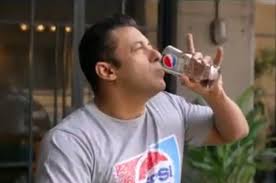The 120-year-old beverage has become an iconic part of global pop culture and shows no signs of stopping.
PEPSI-COLA WAS ONCE CALLED “BRAD’S DRINK
The inventor of Pepsi-Cola was a druggist in North Carolina named Caleb Davis Bradham. In 1893, Bradham began selling “Brad’s Drink” at the soda fountain in his store.
The beverage was a mixture of sugar, water, caramel, lemon oil, nutmeg, kola nuts, and a few other ingredients.
Five years later, Bradham renamed the drink Pepsi Cola because he believed that it helped to stave off dyspepsia (indigestion).
PEPSI WAS THE FIRST SOFT DRINK COMPANY TO USE TWO-LITER BOTTLES.
In the 1970s, an inventor named Nathaniel Wyeth developed a bottle made of polyethylene terephthalate, which was lighter than glass, wouldn’t shatter if dropped, and wouldn’t contaminate its contents.
By 1976, Pepsi was selling the bigger bottles to thirsty consumers everywhere.

THERE ARE DOZENS OF VARIATIONS YOU’VE PROBABLY NEVER HEARD OF.
Like most global brands, Pepsi has experimented with different formulas in different markets around the world, and has also sold limited edition flavors during holidays and other special events.
In Japan, Pepsi flavors have included azuki bean, strawberry milk, shiso, cucumber, baobao tree fruit, yogurt, and salty watermelon.
PEPSI WAS THE FIRST PRODUCT TO BE ADVERTISED USING SKYWRITING.
In 1932, Pepsi hired pilot Andy Stinis to write their name over various cities in the United States, running accompanying print ads in local papers to let consumers know that the Pepsi-Cola Skypilot was coming to town.
Over the next decade, there were around 14 contracted skywriters working for Pepsi, and in 1940 they wrote approximately 2,225 messages over the United States, Mexico, Canada, Cuba, and South America.
THE COMPANY HAS NEARLY 500 PATENTS, INCLUDING ONE FOR A TENNIS RACKET.
In the mid-1970s, PepsiCo patented a tennis racket that was invented by Douglas E.
Dempsey and Gerald F. Herndon. The racket substituted wood and nylon for a “synthetic resinous material which may be integrally reinforce with high modulus reinforcing fibers.”
The frame is to described as consisting of two interlocking channel-shaped pieces with aligning holes for the strings.











